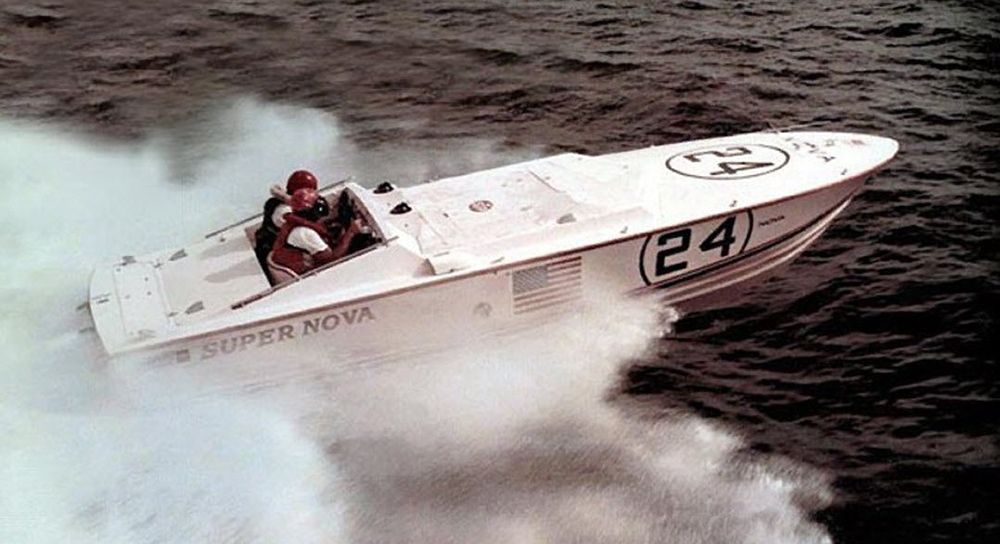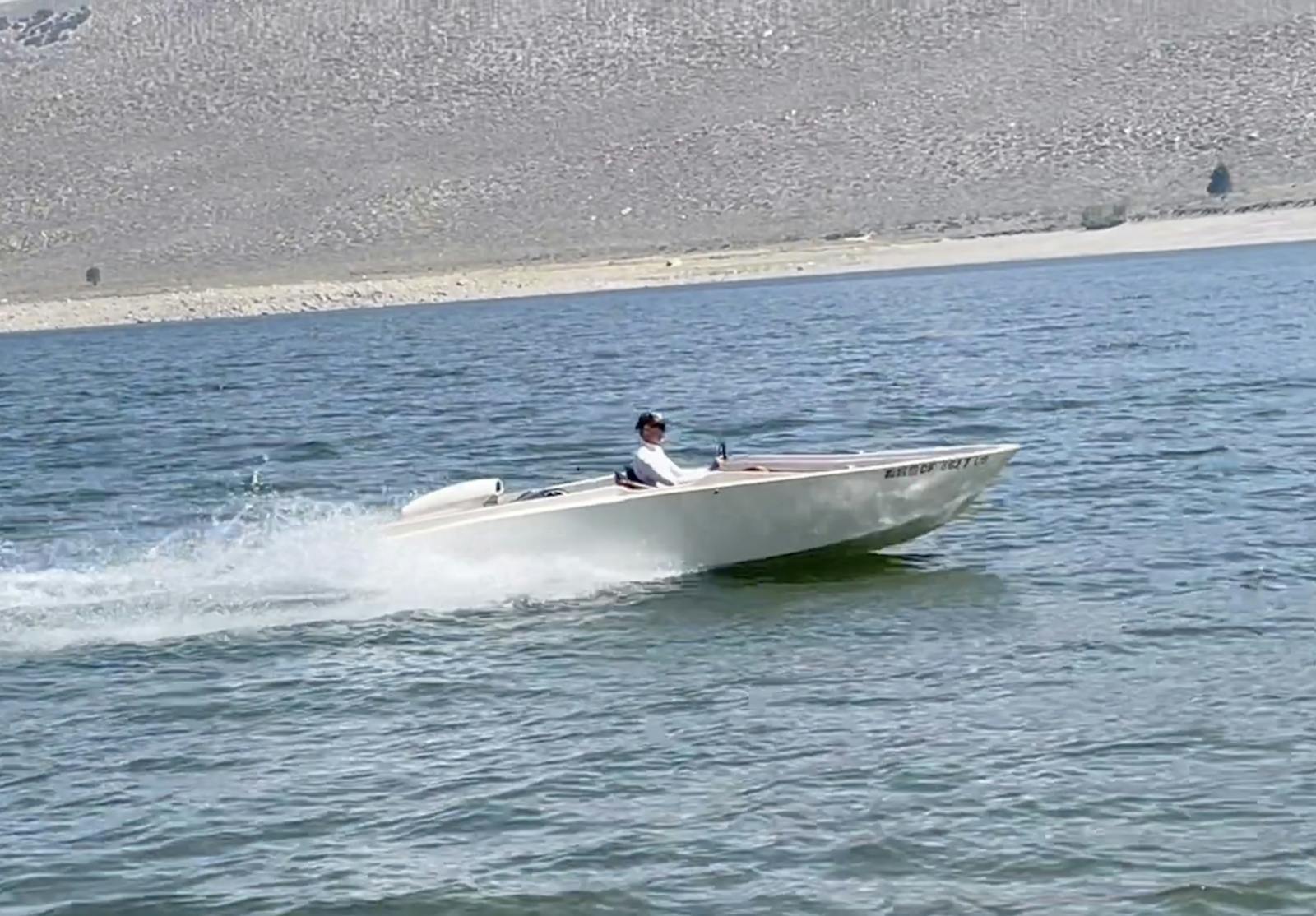This twin-engine prototype launched the Nova Marine boat company
Flying across the water at almost 80 mph in a prototype race boat fitted with two Big-block Chevy engines is a special experience. I was riding in Super Nova, the boat that launched Nova Marine and the only one built with one engine in front of the driver, one behind him and only one propeller.
Even stranger is that both engines are center-mounted athwartships (transversely). The front engine’s power essentially goes straight through the single V-drive while the other engine uses the V-drive’s gears for a 1.15 reduction (the engine turns 15 percent faster than the propeller). With the engines mounted perpendicularly to the fore-aft line, there is also an advantage on weight balance, both laterally and longitudinally. Additionally, the single prop comes out of the water much later than two shafts would, when jumping waves.
The engines thundered, their straight pipes barking from ignition, at idle and at wide-open throttle. Inescapable until the boat was docked and off, the noise seemed to permeate my very soul.
Besides the din how was the experience? I have goggles that have been tested to 113 MPH speed on the water, but this opportunity came as an impromptu invitation that surprised me, and without said goggles! Although we didn’t top 90 mph, my eyes blurred and the wind rushing past was brutally strong. This is a period restored race boat built to crash through and over waves as fast as a person can withstand the pounding for 200 miles in rough ocean conditions.
Seating grips you into the boat. It cocoons you like a jacket, securing you in the boat for rough water conditions. You feel like your upper body and head are exposed to the wind and the speed, but the seat is your salvation of safety, eliminating the fear of getting yanked out.
The Nova prototype was Allan “Brownie” Brown and Dick Cole’s brainchild. They integrated Donzi Marine racing parts with a Cary Marine boat. It wasn’t a stretch though as both had experience with Donzis among others. Brownie worked as Donzi’s sales manager and led their racing program. Additionally, he was an accomplished go-fast racer and knew how to design a boat that met open ocean requirements
Cole had done some design work for Donzi and other boat builders. For example, he designed the Airslot boat models, the “Flipper” TV show’s cathedral hull boat, some of the OMC Gullwing boats and parts of the Yellow Jacket boats. His knowledge was a bit more diverse than Brownie’s, but not quite as deep where offshore racing was involved.
Brownie’s firsthand experience pounding across long distances in the open ocean led them to incorporate parts and mountings that could handle the intense, constant stress. The prototype was also practical, with a nod to safety. Batteries were placed so they could continue running if the boat was sinking. They also used equipment that required fewer holes in the hull below the waterline, except of course for her single drive shaft. For example, the rudder is bolted to the transom above the water line, and an airplane donated its trim tabs since available powerboat trim tabs did not perform as well.
Among the hull’s design features are some of the widest outer-lifting strakes fitted to an offshore racer. And they are spaced well apart. The boat gets up on these outer strakes quickly for more speed without the slowing drag of a full width bottom and wet chines. But the wide strakes create a harsher ride compared against other deep-vee offshore racers.
Nova built 124 production boats after this prototype. Due to financial pressure, Brownie sold the company to Wellcraft Marine in 1970. All of Nova’s pre-sale production boats had two engines behind the driver and used two shafts and two v-drives to propel the boat, since the boat builder didn’t like outdrives.
Overall the ride was a blast, lack of goggles notwithstanding, and one of my summer’s top memories. Is the Super Nova perfect? No. But what a great way to scratch the offshore racing experience itch.


